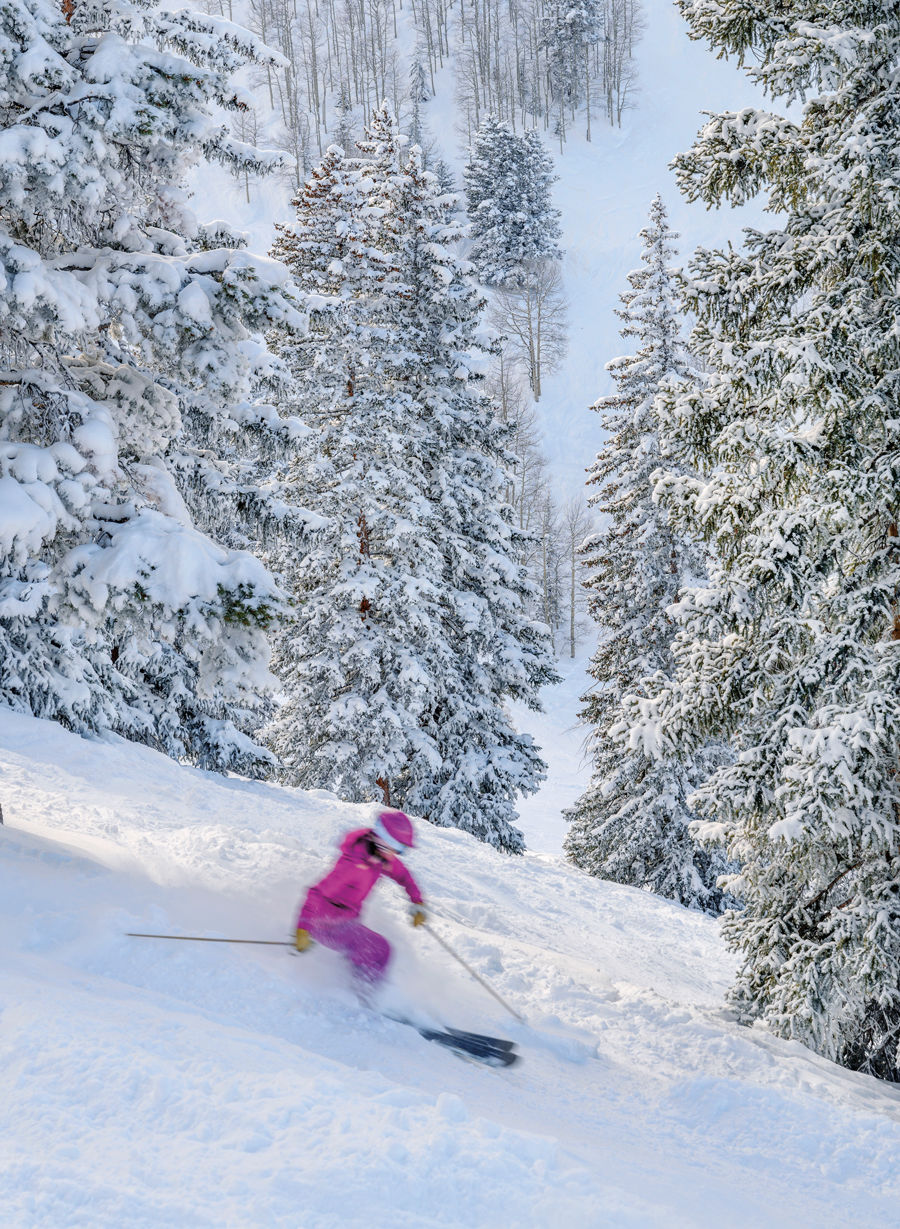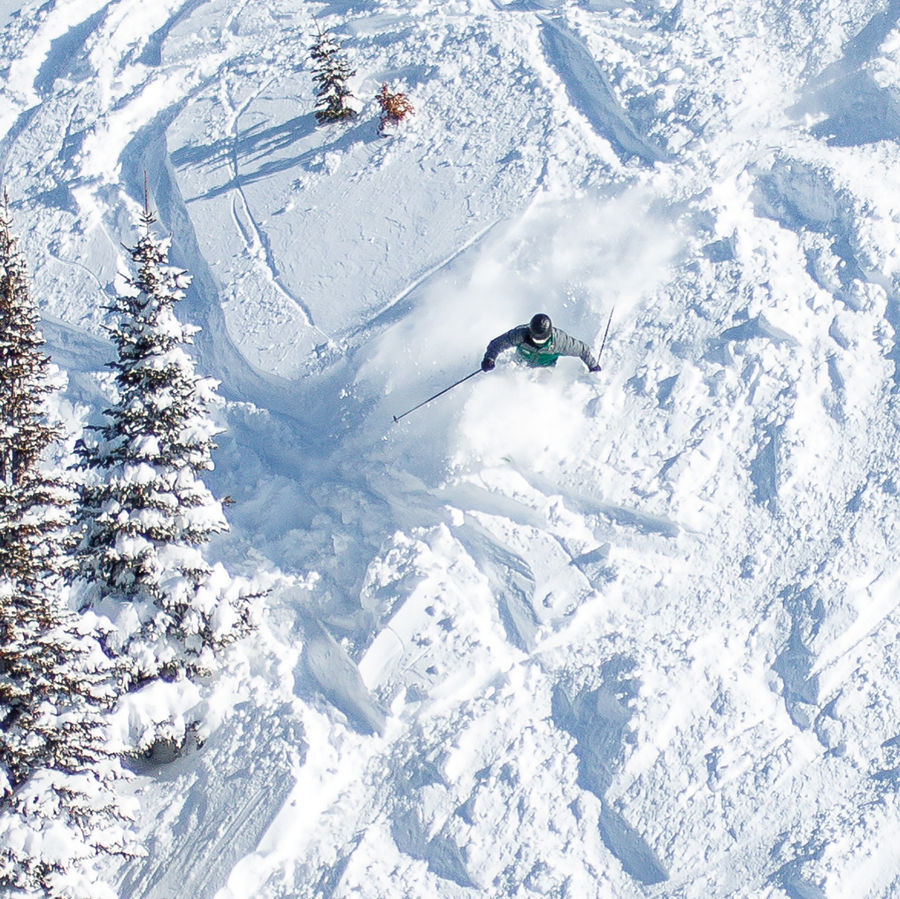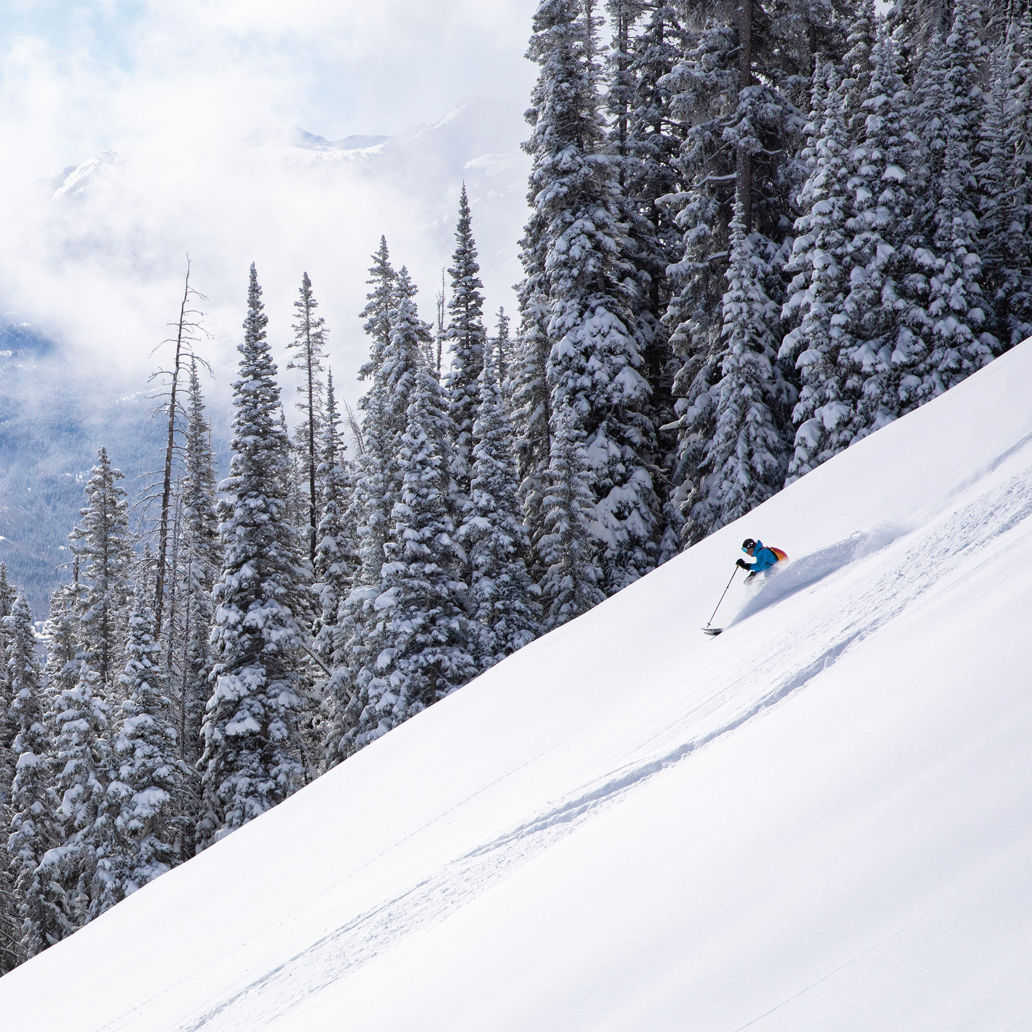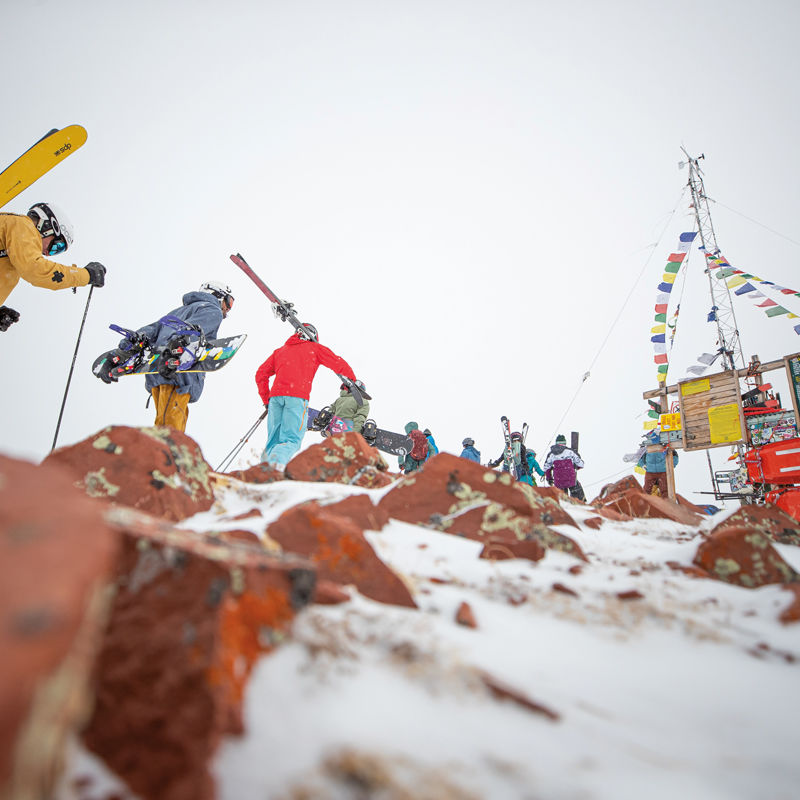Making the Most of Aspen Mountain Takes Some Know-How

Aspen Mountain
Image: Daniel Bayer
Aspen Mountain is riddled with traverses, catwalks, and roads—short, long, marked, and not—that efficiently connect one run to another. Forgo those link-ups, and you’ll quickly funnel to the bottom via Spar Gulch or Copper Bowl, and suddenly Ajax, as it’s also known, seems quite small. Stitch them all together, however, and the mountain feels like it’s tripled its size of 675 acres. The following examples prove the point.
Walsh’s to Glade One to Jackpot
Hugging the eastern ski area boundary, this three-runs-in-one combo covers most of Aspen’s vertical drop of 3,267 feet. Starting on Walsh’s (Hyrup’s or Kristi work, too), test your mettle on this steep, wide-open run that’s enhanced by spectacular views toward Independence Pass. The turns justify the required slog out from the bottom of the run via Lud’s Lane.
Pass the base of the Gent’s Ridge lift and stay right, poling under the large “Experts Only” sign hanging over the trail. Veer left at Glade One, enjoying a dozen or so turns on this lightly skied run before reaching an at times faintly visible traverse heading right into the trees. You’ll know you’re going the proper way when you see the Jimmy Buffett shrine.
Then follow the traverse out of the trees and high across Glades Two and Three until you hit the well-trodden route to Jackpot. Several routes lead down through perfectly spaced aspen trees to a catwalk connecting to the Little Nell run and the base.
Combine the Dumps
When most people ski the Mine Dumps—a row of east-facing, aspen-gladed, double-black-diamond runs below the FIS lift—they don’t realize that an old irrigation ditch, one of many remnants from the mining days, runs across them. Starting near the bottom of Bear Paw, it’s possible to follow this ditch across S1, Short Snort, Zaugg, Perry’s, and Last Dollar and choose any line along the way. It may seem like an uphill journey in spots, but remember that water always flows downhill.
Back to Ridge to Shoulder of Bell
Maximize your turns on Bell Mountain, and potentially experience three different types of snow conditions. Begin by heading down the fall line into east-facing Back of Bell #2, an aspect that storms generally favor with copious powder. After a handful of turns and a short, steep pitch, look for a traverse going left into the trees. Passing the Yankee Stadium shrine, you’ll emerge onto the right flank of Ridge of Bell. Here, you can choose to continue down the north-facing Ridge—where you’ll typically find the most consistent conditions all season long—or traverse it, squaring up directly at the top of the west-facing Shoulder of Bell, the place to be on spring afternoons for thick, soft, forgiving snow.
Heads up this season
New guns serve 20 acres, giving the mountain top-to-bottom snowmaking for the first time...Find heated outdoor dining tents at the Sundeck...Powder Tours is operating for snowcat skiing on the backside of Aspen Mountain, but you must buy out the whole cat for your group ($5,500).



















































